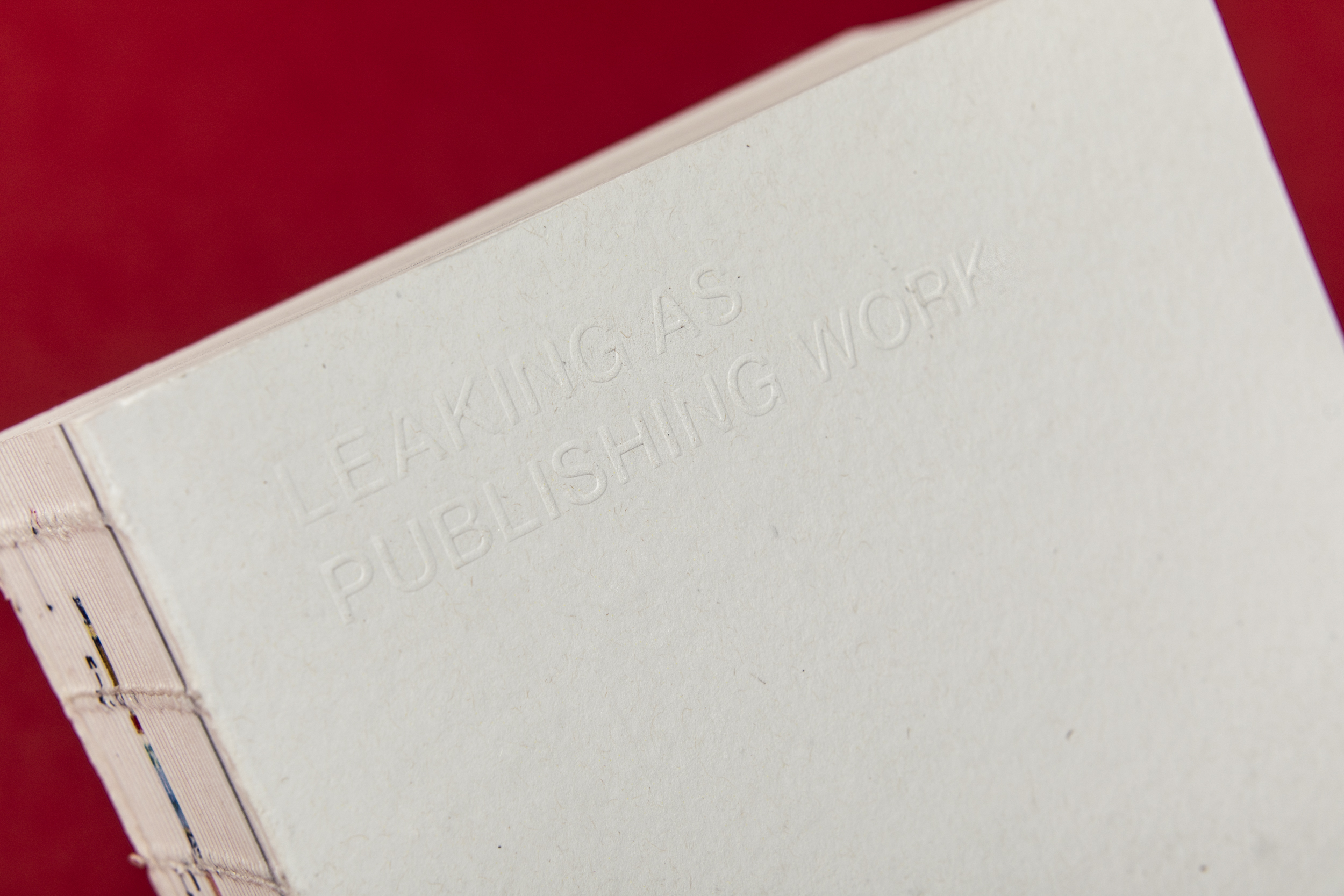
Photo credit: ©The Book Photographer
14 - 06 - 2023
Leaking as publishing work is about whistleblowers who leak information to disclose the truth. I see the act of whistleblowing as the act of ‘making public’.
The urgency to publish for the public good.
Whistleblowing seen as urgent publishing.
Here I see the whistleblower as the publisher. They make the information public by disclosing and bringing the information to light. I see the journalistic platforms as the distributor. Taking on the role of the intermediary, making the information ready to hand (readable) for a wider audience.
In this context, the role of the publisher is to show truth in the contradiction of what is being said and what is being done. Creating access to truth.
By documenting their findings in a transferable way, they can prolong the afterlife of the publication and ensure truth-finding. And the publishing work can be of help to reflect the whistleblower’s intentions.
The goal is to rethink publishing practices to influence whistleblowing practices and vice versa. The book wants to highlight the creative and political relevance of leaking as publishing work.
ABOUT THE DESIGN
In the first part of the book, I show a visual translation of two whistleblowing cases
as a factual account.
I restructured the complex narratives. By categorizing, revisiting, zooming in on,
and searching for repetition, in the information. A process of making and analyzing.
In the first case, the pages act as a literal pile-up of wrongdoing collected over the
years. Whereas in the second case, the pages act as the flipping of time.
It shows a clear contrast in the context between the two cases.
In the second part, I show my research on how the context of the whistleblowing case - the environment, and the nature of the information - influences the publishing work, and how the approach to publishing can increase access to truth.
LEAKING AS PUBLISHING WORK
Leaking as publishing work is about whistleblowers who leak information to disclose the truth. I see the act of whistleblowing as the act of ‘making public’.
The urgency to publish for the public good.
Whistleblowing seen as urgent publishing.
Here I see the whistleblower as the publisher. They make the information public by disclosing and bringing the information to light. I see the journalistic platforms as the distributor. Taking on the role of the intermediary, making the information ready to hand (readable) for a wider audience.
In this context, the role of the publisher is to show truth in the contradiction of what is being said and what is being done. Creating access to truth.
By documenting their findings in a transferable way, they can prolong the afterlife of the publication and ensure truth-finding. And the publishing work can be of help to reflect the whistleblower’s intentions.
The goal is to rethink publishing practices to influence whistleblowing practices and vice versa. The book wants to highlight the creative and political relevance of leaking as publishing work.
ABOUT THE DESIGN
In the first part of the book, I show a visual translation of two whistleblowing cases
as a factual account.
I restructured the complex narratives. By categorizing, revisiting, zooming in on,
and searching for repetition, in the information. A process of making and analyzing.
In the first case, the pages act as a literal pile-up of wrongdoing collected over the
years. Whereas in the second case, the pages act as the flipping of time.
It shows a clear contrast in the context between the two cases.
In the second part, I show my research on how the context of the whistleblowing case - the environment, and the nature of the information - influences the publishing work, and how the approach to publishing can increase access to truth.







